Scottish Art News
Latest news
Magazine
News & Press
Publications
How Lies the Land? Folkestone Triennial 2025 Highlights Scottish Art
10.10.2025
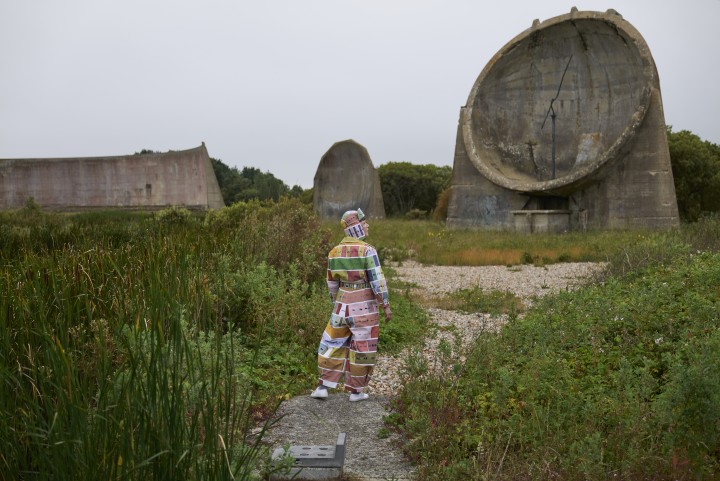
In the last two decades, the Folkestone Triennial has established itself as one of the UK’s most interesting art festivals. Leading artists from Britain and further afield have contributed to the event, which calls itself “the UK’s largest urban outdoor exhibition of contemporary art”. However, this year’s Triennial, How Lies the Land?, has a particularly strong representation from Scotland.
Perhaps that shouldn’t come as a surprise as the curator is Edinburgh-based Sorcha Carey, director of the Edinburgh Art Festival for 10 years and now at the helm of Collective. Her particular knowledge of Scottish art means that of the 18 artists represented in Folkestone this summer, three are Scots. Katie Paterson, Hanna Tuulikki and Rae-Yen Song present major new works alongside Laure Prouvost, Monster Chetwynd and Cooking Sections.
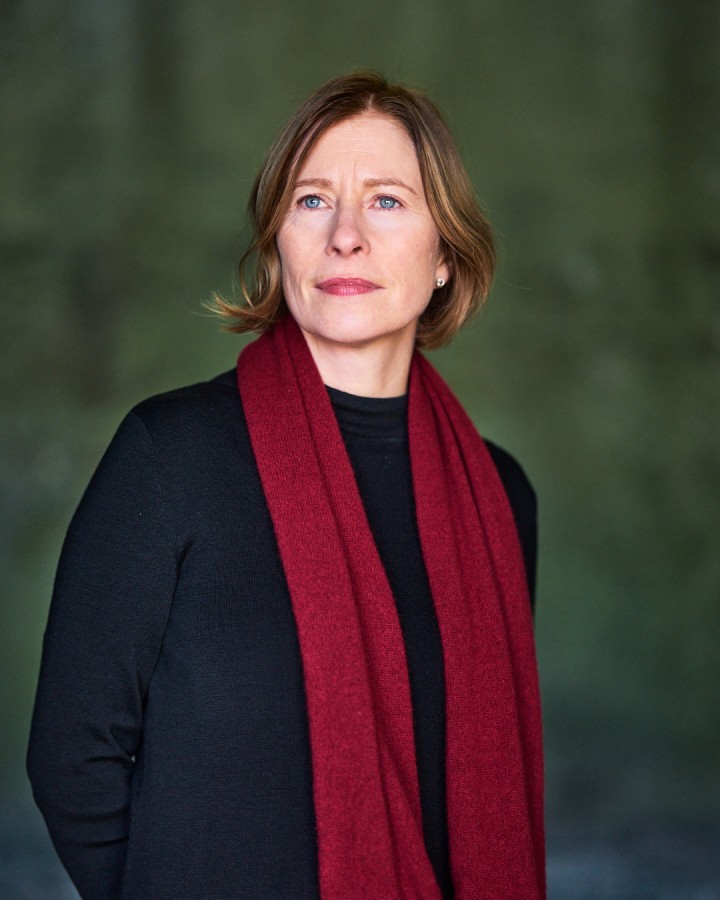 Socha Carey, photographed by Matt Rowe
Socha Carey, photographed by Matt Rowe
“There are many special things about the Folkestone Triennial,” Carey says. “There is a substantial budget, but it’s more about how they choose to spend that budget. Other international biennials and triennials might have more artists, but the majority are showing pre-existing work and at a much smaller scale. At Folkestone, the works are new commissions developed specifically in relation to the town, and shown in public spaces.”
The Folkestone Triennial launched in 2008, part of an urban regeneration programme which had culture at its heart. Once a chic seaside resort, Folkestone had declined in the second half of the twentieth century. Its focus was its ferry port, but the last boat sailed in 2000 following the growing popularity of the Channel Tunnel, leaving the town on its uppers. Over the past two decades, the harbour, pier and parts of the town centre have been gradually transformed. After each Triennial, some of the artworks are retained permanently, meaning Folkstone now has an open-air art collection, which includes work by Anthony Gormley, Tracey Emin, Nathan Coley, Cornelia Parker, Hamish Fulton, David Shrigley, Yoko Ono and Banksy.
When Carey was appointed as the curator of the 2025 Triennial, she was aware of the importance of making room for new work and finding new spaces in the town to exhibit. She began with a deep dive into Folkestone history at the local museum, and was surprised to discover the bones of a rhinoceros and hippopotamus, megafauna from an era when Britain was joined by land to Europe, and the burial trove of a young Anglo-Saxon woman whose jewellery included garnets from Sri Lanka and amber from the Baltic. “These aspects of Folkestone’s history felt completely new to me. I was really struck by the sense of connection with the deep past, even through ruptures and radical shifts in landscape, and also that, even in early communities, lots of migrants came to these shores and people were connected to an international network of trade and exchange. For me, that offered a really interesting imaginative space where we could think about some of the things that we’re still wrestling with now, away from the very polarised politics of the present day.”
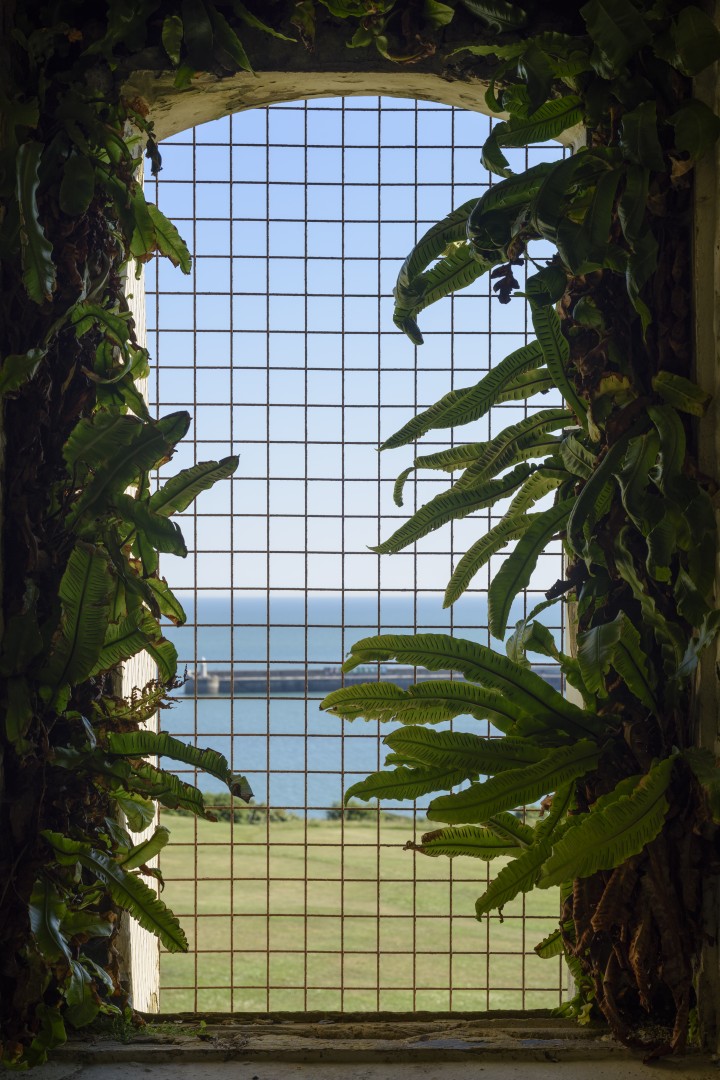 Katie Paterson exhibition ‘Afterlife’, in a Martello Tower above Folkestone
Katie Paterson exhibition ‘Afterlife’, in a Martello Tower above Folkestone
“I started by approaching some artists who I thought would find this context interesting, and then I built quite organically. It was important to me that the programme reflected all the different ways artists are making site-responsive work. And being a curator who has spent the last 15 years working in Scotland, I was also keen to bring Scottish artists into the programme.”
Katie Paterson is a natural choice for a curator interested in deep time. She presents a major new installation, ‘Afterlife’, in a Martello Tower above Folkestone. The work is a collection of 197 amulets from museums and collections all over the world which have been 3D-scanned and cast, each in a different material taken from an endangered landscape, form plastics regurgitated by a baby albatross to space junk to twigs from trees which survived the Hiroshima atom bomb. Paterson said the lengthy process of identifying the amulets and the materials “felt like making 197 artworks. They condense the crises we’re facing now into small human-sized objects we can relate to in some way, objects which are associated with protection, prayer and hope.”
.jpg) Katie Paterson exhibition ‘Afterlife’
Katie Paterson exhibition ‘Afterlife’
Carey said: “It’s a very special piece, and a piece where the deep research is so enriching, in terms of the generosity of the knowledge but also the thought and care that has gone into the selection both of the amulets and the materials.”
Nearby, an equally ambitious new sound composition by Hanna Tuulikki is installed in a World War I observation post. Tuulikki was inspired by a bird, the marsh warbler, which, in a migratory journey which covers half the globe, modifies its song to reflect those of the other birds it encounters. After working with an ornithologist to map the sound journey of one particular bird, she recreated its song in her own voice, using love songs sourced from each of the territories it passed through.
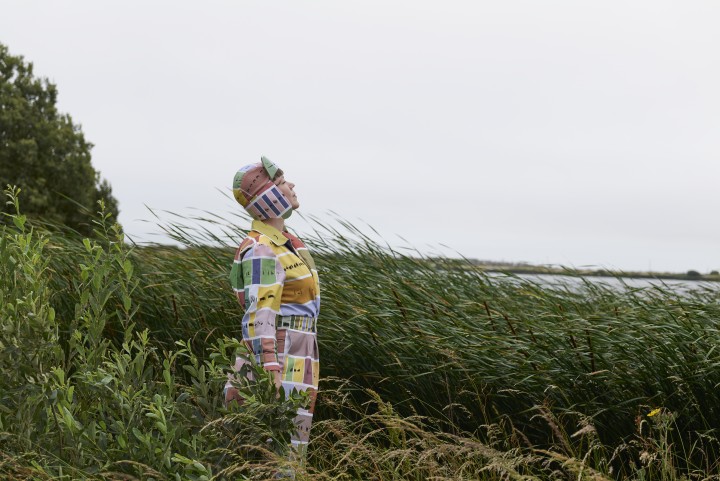 Hanna Tuulikki
Hanna Tuulikki
Carey says: “Her work is about migration, how the language around human migration very often feels threatening, while for birds, it’s seen as a completely natural thing, not constrained by human borders or territories. There’s something really beautiful about the marsh warbler’s process of exchange, and also the way the bird’s own song becomes a document of its journey and the encounters it has.”
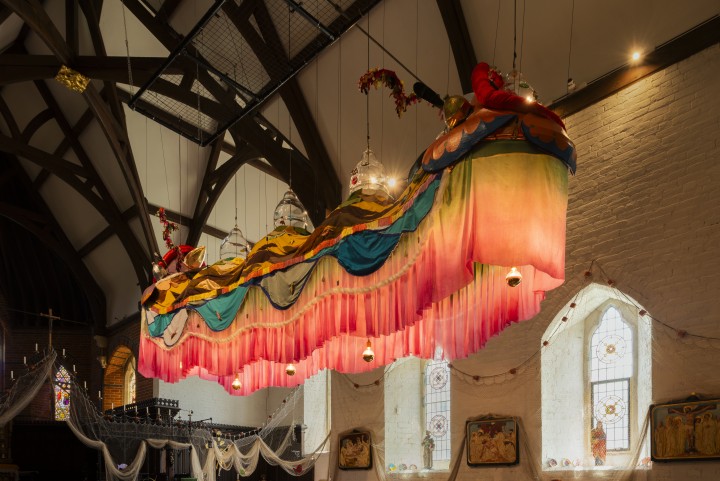 Rae-Yen Song, suspended costume inspired by sandmason worms on Folkestone’s beaches
Rae-Yen Song, suspended costume inspired by sandmason worms on Folkestone’s beaches
Meanwhile, Rae-Yen Song has created an impressive installation in the song dynasty ○○○○ series for St Peter’s Church, which was built in Victorian times for the fishing community. The suspended sculpture, which is also a wearable costume for several people, was inspired by the sandmason worms on Folkestone’s beaches, which create impressive structures out of sand, itself made from the bones of earlier sea creatures.
“Rae-Yen was in a very early edition of Platform at Edinburgh Art Festival,” Carey says. “I’ve followed Rae-Yen’s work since then, and really felt there was potential for that to appear in a site-specific way. This five-metre-long worm, some of it made with fabrics from Rae-Yen’s grandmother’s collection, is an extraordinarily beautiful thing. Rae-Yen, whose practice is often involved with thinking about heritage, family and cultural traditions, was drawn to the sense that the sandmason worm was building its home from the remains of ancestors.”
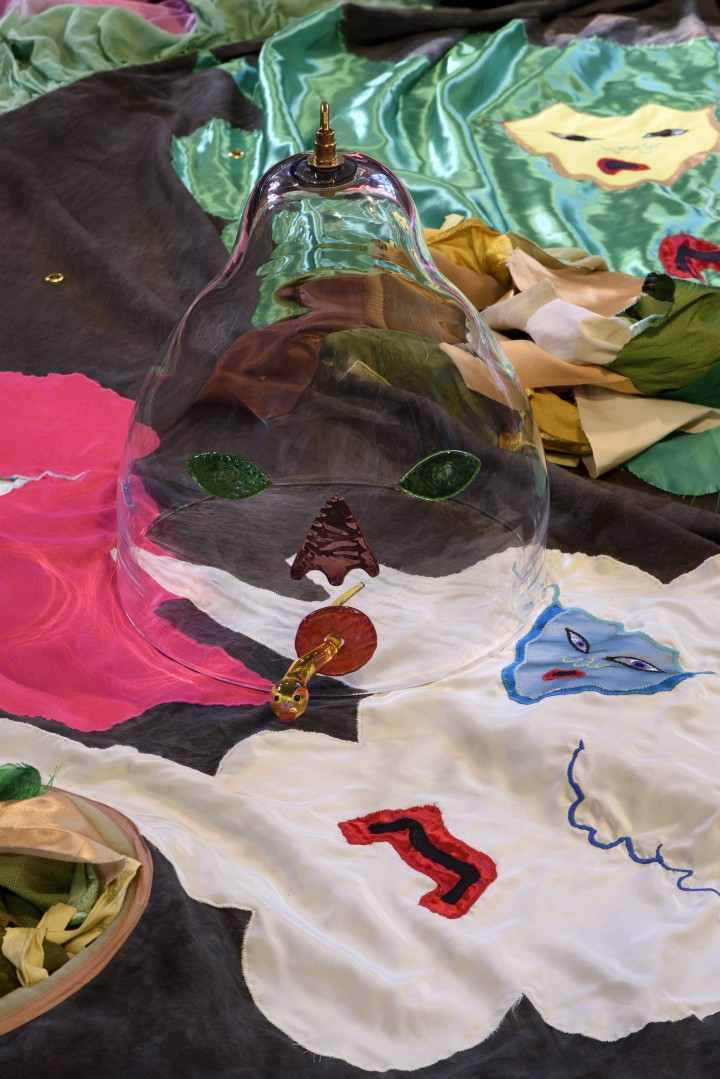 Work by Rae-Yen Song
Work by Rae-Yen Song
How Lies the Land? manages to encompass past and present, issues such as migration and climate change, the human impact on the landscape, the history hidden in the soil. Carey says: “I looked into the origins of the phrase ‘the lie of the land’, and one of the earliest usages is actually in the question ‘how lies the land?’ I wanted to use that because this edition of the Triennial is about asking questions, it’s not about providing some definitive statement about where we are now, it’s more about genuinely asking where we are now, being curious, being open.”
The 2025 Folkestone Triennial, How Lies the Land? runs until 19th October.
The permanent collection is available to view year-round. For more information, visit: www.creativefolkestone.org.uk




